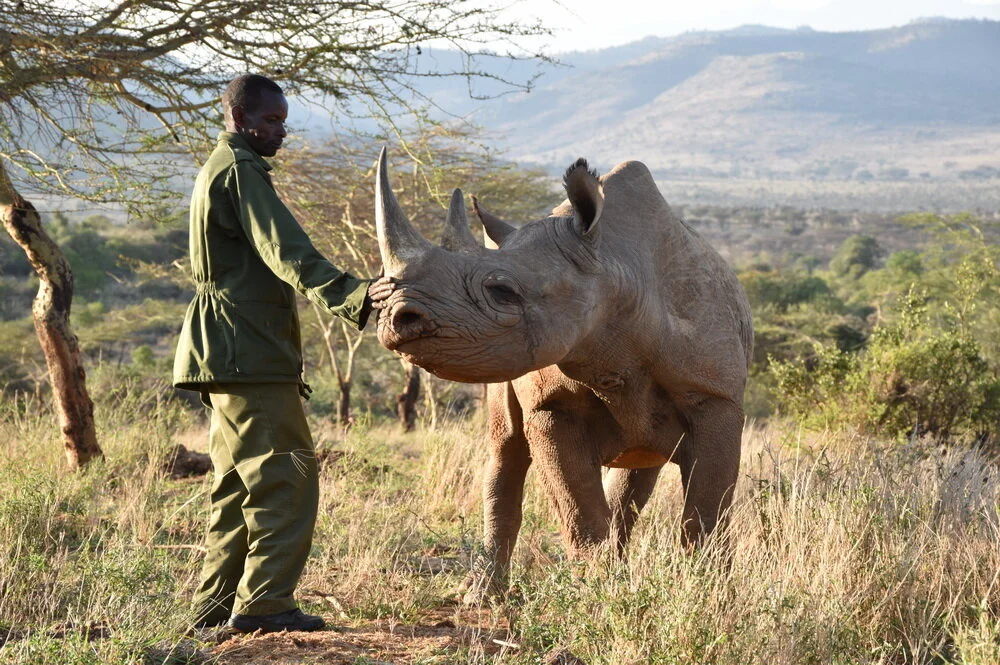
Rainforest Trust’s mission for over 30 years has been to prevent the destruction of rainforests and other tropical habitat through the creation of protected areas. Kati Kaia buys acres of land for conservation projects with every mat sold, assisting Rainforest Trust to create 178 protected areas totalling over 24 million acres, and they have another 100 or so in the works. From securing vital habitat in Kenya for the last Black Rhinos, to the Leuser Corridor Eco-system, which we have written about before, creating a haven for rare Sumatran species.
So why are protected areas so important? Here are our top five reasons ...
1. SAFEGUARD BIODIVERSITY
Protected areas guard critical habitat for species. Recent studies show that on average the number of species in a protected area is 10.6% higher than outside, and the populations of those species are 14.5% greater when they live on protected land.

The Beautiful Red Panda
2. PROTECT OUR CLIMATE
Rainforests store billions of tonnes of carbon, which is released into the atmosphere as the greenhouse gas CO2 when forests are set on fire. Protected areas preserve these vital carbon sinks, helping to reduce the impacts of climate change.

More than 200,000 acres of Rainforest are lost every day.
3. PROVIDE LOCAL ECONOMIC SUCCESS
When protected areas are created in collaboration with rural communities, local economies stand to benefit in a number of ways. Communities often find employment in protected areas, as forest guardians, in ecotourism or through sustainable farming.

Marsabit Meru Corridor, Kenya. Photo Credit Ami Vitale.
4. PREVENT THE SPREAD OF DISEASE
Clearing rainforest habitat displaces biodiversity and renders ecosystems unbalanced. 60% of infectious diseases – including SARS, Lyme, Ebola and Covid-19 – are zoonotic in origin. Protected areas help to keep ecosystems intact, thus playing a vital role in disease prevention. We literally need to keep these habitats intact.

Rainforest Landscape by Rainforest Trust
5. ENSURE FOOD AND WATER SECURITY
Management plans within our protected areas often promote best practices for sustainable agriculture that result in greater supplies for local communities to consume or sell. These areas also protect watersheds that ensure a clean water supply.

Local Fisherman in Malaysia
PROTECTED AREAS MATTER.
We all benefit when nature is protected, and the need for protected areas has never been more urgent. Lastly, I wanted to share with you, one of the 178 wonderful projects happening right now. Securing vital Black Rhino Habitat in Kenya. This project was highlighted in Prince William’s awesome conservation documentary on ITV ‘A Planet for us all’. During his trip to Africa, in stirring scenes filmed at a heavily guarded ivory facility in Tanzania, we saw 43,000 tusks with a street value of £50million were impounded, those images shocked us all.

Black Rhino from Rhino International
PROJECT AT A GLANCE.
Located on the northern slope of Mount Kenya, Lewa Wildlife Conservancy encompasses a rich matrix of highland forest, acacia woodlands, grassland savannah, permanent wetlands and riparian habitats. The conservancy protects the only wildlife corridor that connects Mount Kenya’s upper slopes to Kenya’s Northern Rangelands.
The 62,000 acre conservancy is a safe haven for threatened wildlife in northern Kenya, including 14% of the country’s Black Rhinoceros population and the world’s single largest population of Grevy’s Zebra. It also provides a refuge for more than 300 migratory African Elephants, as well as African Wild Dogs, Reticulated Giraffes, Lions and Cheetahs. Recent surveys confirmed the presence of the Critically Endangered Pancake Tortoise, which is anticipated to have a stronghold on the parcel proposed for purchase and will be the subject of future research efforts.

Baby Black Rhino
PREVENT UNSUSTAINABLE DEVELOPMENT.
Rainforest Trust’s partner, Lewa Wildlife Conservation, currently owns and permanently protects 32,000 acres of the entire conservancy. Of the remaining 30,000 acres, 14,000 are designated as the The Ndare National Forest Reserve and 15,800 acres are privately owned and at risk for sale and development.

Chester Zoo’s Black Rhino Residents
To help protect this critical habitat in perpetuity, Rainforest Trust is working with Lewa Wildlife Conservation to secure a 4,625 acre parcel of the privately owned land, thus preventing the threat of development and securing the safety of the entire conservancy.
JOIN OUR SOLUTION.
Your donation will help our partner in their long-term goal of achieving permanent protection for all land within the conservancy’s secure boundary through land acquisitions. Employing research and monitoring, our partner is able to make informed conservation decisions about how to promote ecosystem health. These efforts are supported by a highly trained cadre of rangers using the most sophisticated technology available. It will also allow them to continue their efforts to help local communities through the provision of education, healthcare, water management and enterprise development.
Thank you for your guidance Rainforest Trust - we look forward to supporting this project and many others to come. You can read more of their projects here.
Namaste. X








0 comments